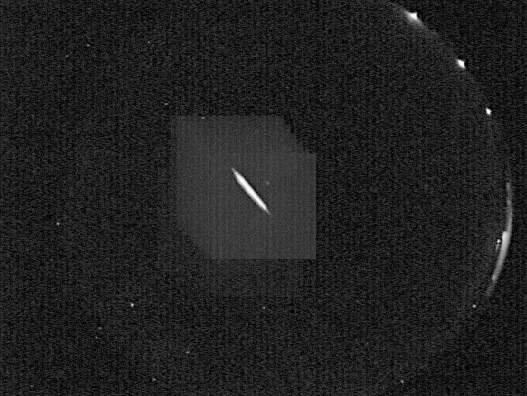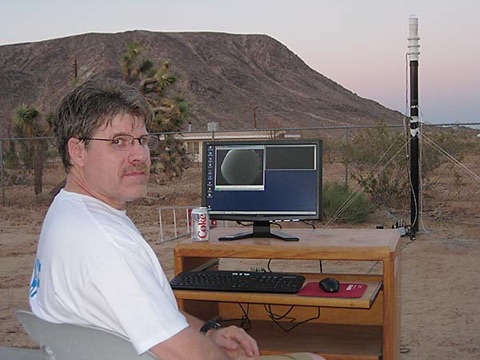Sentinel All-Sky Meteor Camera at GMARS

In June 2009, fellow RAS member Bob Stephens and I erected (also need to give credit to Charlie Knapke) a stand-alone pier for an all-sky meteor camera at GMARS. The camera was a grant to the RAS from Sandia National Labs in New Mexico, which has built and handed out several dozen of them to be part of an observation network aimed at gathering data on fireballs.
The weekend of 27 June 2009 was its first real operation, and we had the system watching both Friday and Saturday night. Between the two nights, we captured two certain fireballs, and a third possible. A composite shot of one, which took place almost overhead shortly after midnight, is below, along with link to a QuickTime movie of the event. I happened to be reclined in a lounge chair at the time, out on the observing field, and saw the fireball as it broke up. Very cool.
We are currently limiting observations to weekends when we are at GMARS, but we expect to be able to configure the system to run continually by this fall, perhaps with remote accessibility to the data. Eventually, we hope to coordinate our observations with others, especially sites within 150 miles or so. By creating a network of stations - a sort of virtual meteor observatory - we could do entry vector and even orbit determination based on triangulated observations. Such data would be of great value to professional meteor researchers.
To check out observations of the 2009 Geminids, go here - for the 2010 Perseids, go here.
At left: Sentinel meteor camera at GMARS. Above: A composite image of a fireball taken early Sunday morning, 28 June 2009. Click here for a video of the event.




At left: Bob Stephens at the controls of the Sentinel computer, which is temporarily on a roll-around cart.
At right: Charlie Knapke pours concrete into the pier shaft to reinforce it.